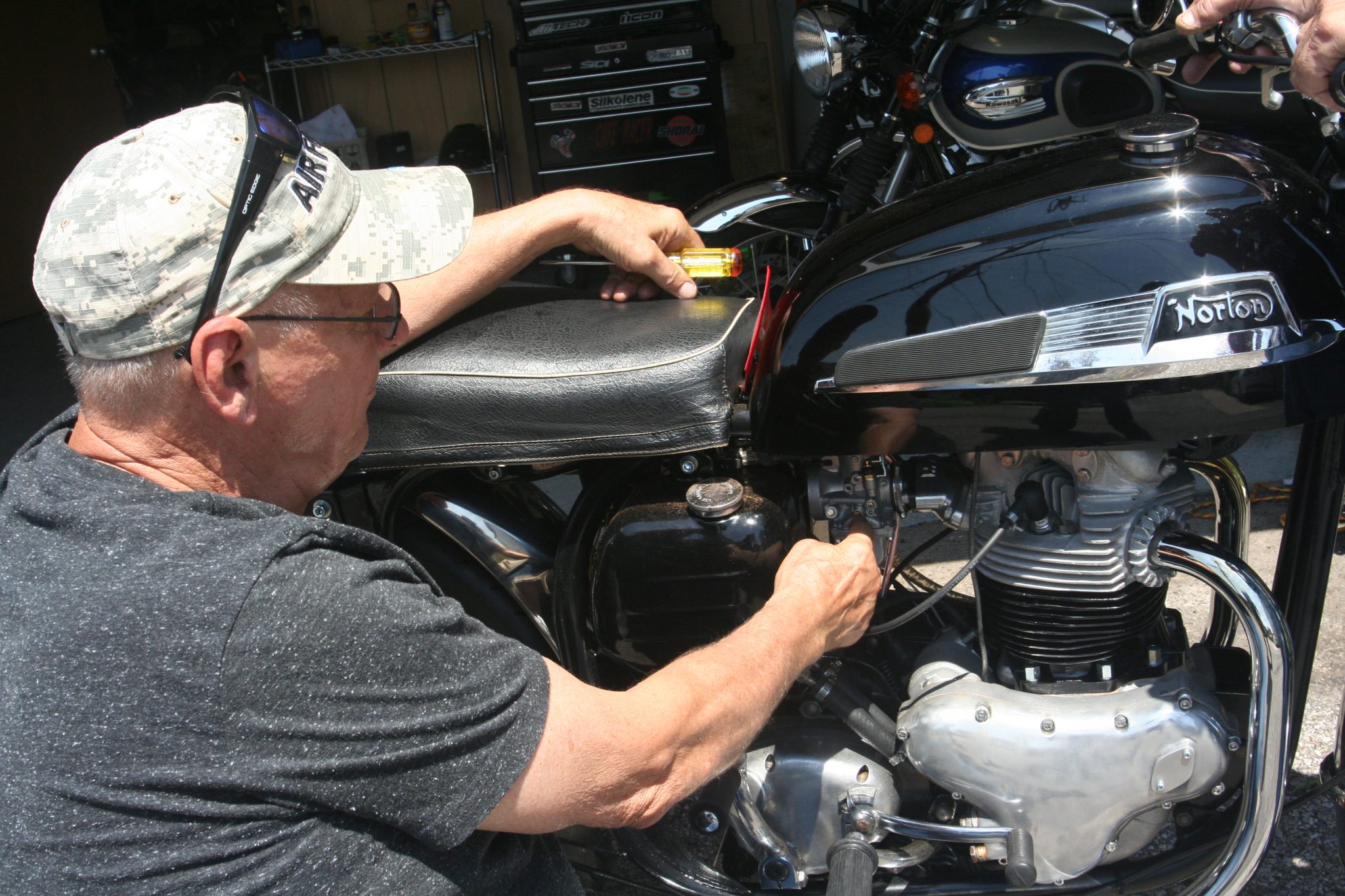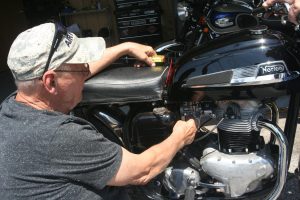
More than once in recent years folks have asked me why continue to pursue knowledge in the classic motorbike field, especially when motorcycle sales are in the collective toilet in the U.S. and the demographic who remembers when Nortons and Triumphs ruled the roads is quickly becoming a non-riding one. One explanation is practical: if you’re going to own and build these kinds of mid-20th Century machines, knowing how to fix and rebuild them is a necessity (unless you want to go broke!) That and there’s an undeniable magic to sorting out and then riding old bikes, an exhilaration you just don’t experience with modern metal. Take our recently completed 1967 Norton Atlas for example. The basket-case 750 was picked up for just $2,500 a couple of summers back and the trials and (many) errors of building it with CRM pal Nick Coumos has proven an education like no other. Now slowly getting on the road with a series of 10-20-mile shakedown runs, when everything goes well, the brief rides are sensory overloads, with the warm, summer air, the various mechanical sounds and the sensations of a big, air-cooled parallel twin booming away beneath you an unforgettable slice of two-wheeled fun. The downside? After each and every ride, we spend a few minutes tightening every nut and bolt on the bike re-torqueing the head bolts, axles and other bits to ensure that everything we’ve spent two years attaching stays in place for the next ride. This used to seem like a major hassle, but having accepted the risks and responsibilities of being a classic bike owner, it’s now about as mundane as filling the gas tank. It’s, in ways, the ultimate trade-off; wrench time in exchange for a chance to ride a historical motorcycle.


